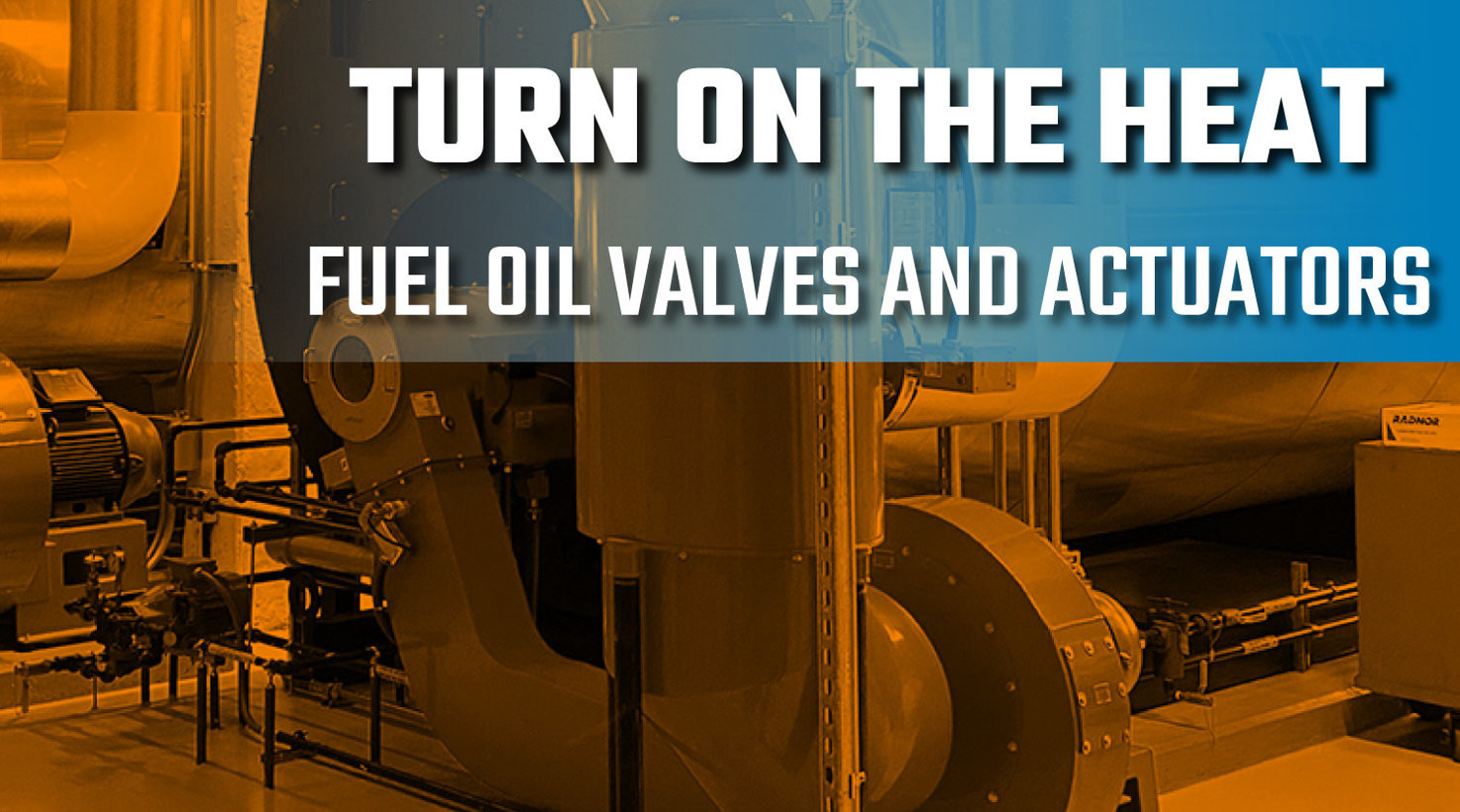If you have an oil-burning boiler furnace, you know how important it is to control the quantity of oil flowing in. After all, if you have too much oil coming in, you’ll create too much heat that can damage your boiler. Too little, and you won’t be making enough steam. In order to find that sweet spot for maximum efficiency and performance, you need fuel oil valves and actuators to keep your fuel coming in at just the right amount.
The Oil Makes It Boil
As you know, oil-fired boilers use a mixture of oil spray and air to create the flames that make the steam. The quantity of oil coming in has to be in balance with the amount of available oxygen, or else you’ll end up with a furnace that’s running too rich or too lean.
Fuel oil valves are used to control the flow of oil, and are calibrated and synchronized with the furnace’s fire control system to coordinate with the amount of available air. So when the valve is at a particular position, it’s letting a consistent, known quantity of oil flow through. Fuel oil valves are also responsible for cutting off the fuel supply entirely when the furnace needs to shut down, so as you can imagine they’re designed not to leak.
Crank It
Adjusting the amount of fuel oil coming in isn’t like manning a barbecue grill in the backyard; it’s not like you can just put your hand in there and give the valve a turn. The valve’s position has to be carefully controlled by the boiler’s flame control system so that the boiler can operate safely. To make those adjustments to the valve, then, fuel oil valves are usually attached to actuators.
Actuators are either servo motors or modulating motors. They’re different from other motors in that they don’t just turn around and around. They can be moved to any position in their range of motion, and they’ll stay there and hold their position. That makes them perfect for fuel oil valve operation, because once the actuator and the valve are calibrated properly, the control system will know just how much the motor has to move to let in a specific quantity of oil.
How It Works
As an example, let’s say your boiler needs more steam during a peak demand period. That means it has to produce more heat. When the control system senses that more heat is called for, it sends a signal to the actuator which, in turn, moves the valve to open a little bit or a lot depending on the demand. Now let’s say your boiler is producing more steam than it needs to. That means less heat. Consequently, the control system will send a signal to the actuator, which will then reduce the flow of oil by closing the valve most or all of the way.
If you need any help with the valves and actuators in your oil-burning boiler or any part of it at all, the experts at WARE are standing by to help. We have an extensive inventory of parts and the expertise to keep your oil-burning boiler operating at peak efficiency and safety. Of course, if you’re in the market for a new or rental boiler, we can help there, too. We have a huge inventory of boilers ready to go. Just let us know how we can help.
